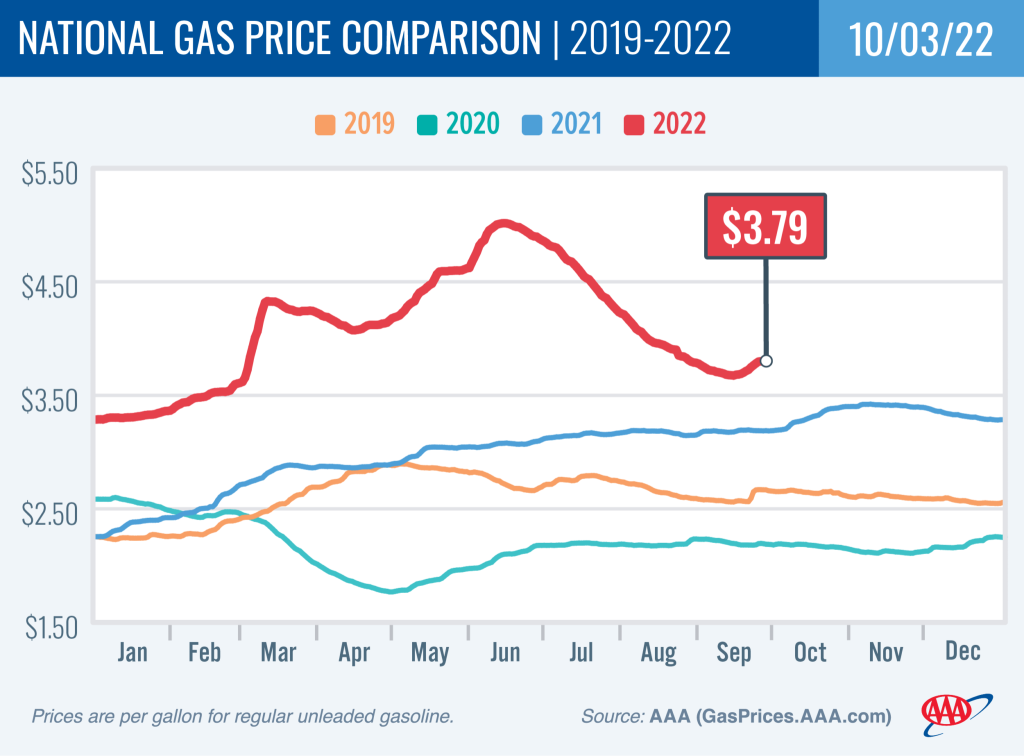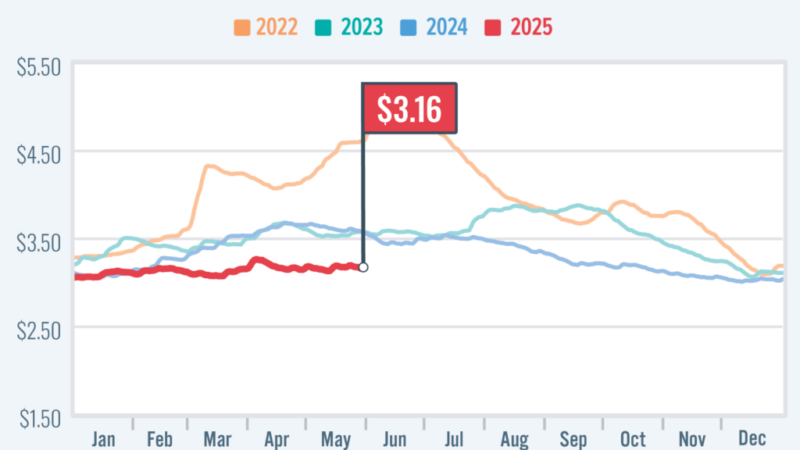Tight Supply and More Demand Cause Pump Prices to Rise
 WASHINGTON, D.C. — The national average pump price for a gallon of gas maintained its recent surge, rising seven cents over the past week to hit $3.79. Tight supply and increased demand as more drivers fuel up are the main culprits.
WASHINGTON, D.C. — The national average pump price for a gallon of gas maintained its recent surge, rising seven cents over the past week to hit $3.79. Tight supply and increased demand as more drivers fuel up are the main culprits.
“The regional differences in gas prices are stark at the moment, with prices on the West Coast hitting $6 a gallon and higher, while Texas and Gulf Coast states have prices dipping below $3 in some areas,” said Andrew Gross, AAA spokesperson. “At least six California refineries are undergoing maintenance, and there is limited pipeline supply to the West Coast from locations east of the Rockies.”
To offset surging prices, California officials will allow the sale of less expensive winter blend gasoline a month ahead of schedule. It is unknown how much of an impact this will have on prices. Meanwhile, gas prices in the upper Midwest have risen since a deadly refinery fire on September 20 in Toledo, Ohio, which closed the plant. According to the latest reports, the 160,000 barrel-per-day BP-Husky Toledo refinery could be down for months.
According to data from the Energy Information Administration (EIA), gas demand increased nationally from 8.32 million b/d to 8.83 million b/d last week. Total domestic gasoline stocks decreased by 2.4 million bbl to 212.2 million bbl. If demand remains robust as supply tightens, drivers should brace for rising pump prices through the weekend.
Today’s national average of $3.79 is the same as a month ago but 60 cents more than a year ago.
Quick Stats
The nation’s top 10 largest weekly increases: California (+59 cents), Alaska (+54 cents), Oregon (+43 cents), Washington (+38 cents), Arizona (+38 cents), Nevada (+38 cents), Michigan (+19 cents), Illinois (+19 cents), Wisconsin (+17 cents) and Indiana (+16 cents).
The nation’s top 10 most expensive markets: California ($6.37), Nevada ($5.49), Oregon ($5.42), Alaska ($5.32), Washington ($5.29), Hawaii ($5.21), Arizona ($4.49), Idaho ($4.42), Michigan ($4.16) and Illinois ($4.16).
Oil Market Dynamics
At the close of Friday’s formal trading session, WTI decreased by $1.74 to settle at $79.49. Crude prices decreased at the end of last week due to lingering market concerns that demand will decline if global economic growth stalls or decreases due to a recession. However, reports have emerged that the Organization of the Petroleum Exporting Countries (OPEC) and its allies—including Russia—known as OPEC+ intend to announce collective oil production cuts at their next meeting on October 5 in Vienna. If OPEC+ reduces production, crude prices could rise this week. Additionally, according to the EIA’s latest weekly report, total domestic commercial crude inventories decreased slightly by 200,000 bbl to 430.6 million bbl.
Drivers can find current gas prices along their route using the AAA TripTik Travel planner.
Source: https://rvbusiness.com/tight-supply-and-more-demand-cause-pump-prices-to-rise/







